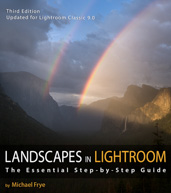by Michael Frye | Apr 15, 2020 | Announcements

I just got the schedule for the Out of Chicago Live conference, and it looks amazing.
The instructors and topics include all genres of photography, but the lineup of landscape-photography instructors is really outstanding, with people like Alan Ross, Charlotte Gibb, William Neill, Ian Plant, Erin Babnik, David Kingham, Colleen Miniuk, John Barklay, Gavin Hardcastle, Michael Shainblum, Nick Page, Jennifer King, Patricia Davidson, Tim Cooper, Jack Curran, Thomas Heaton, Sean Bagshaw, Joshua Cripps, Matt Payne, Sarah Marino, Royce Bair, Alex Noriega, Jay Patel, Adam Gibbs, Colby Brown, and Alister Benn. Quite a list!
I’ll be giving an expanded version of the presentation I gave for the Out of Yosemite conference in February, called Capturing a Mood. I’ll also be presenting a Lightroom tutorial about using the Range Mask, and participating in a panel discussion called Landscape Composition Secrets of the Pros, along with Charlotte Gibb, Ian Plant, and Adam Gibbs.
(more…)
by Michael Frye | Apr 12, 2020 | Advanced Techniques, Digital Photography Basics, Photography Tips
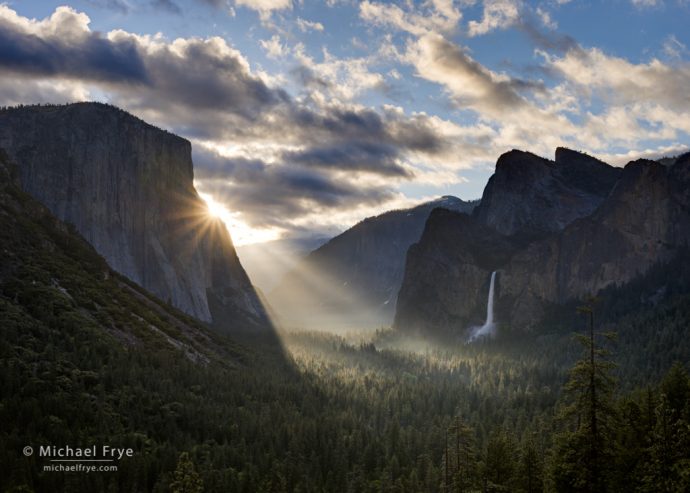
Sunbeams from Tunnel View, spring, Yosemite. Having a solid, well-practiced field routine helps me to calmly capture fleeting moments of light like this. 40mm, three auto-bracketed bracketed exposures at f/11, ISO 100.
Do you have a consistent field routine? Do you go through the same steps, in the same order, every time you take a photograph?
If you said no, you’re in good company. Most photographers I work with don’t have a solid, consistent field routine.
But I think having this routine is vital. Without one, you’re likely to forget important steps, like setting the right f-stop, or checking sharpness (and then kick yourself later when you realize your mistake). And when a rainbow suddenly appears over Yosemite Valley, or sunbeams break through the fog in a redwood forest, having a solid, consistent routine that you’ve practiced over and over will help you avoid panicking. You can just go through your normal routine and concentrate on putting one foot in front of the other, knowing that you won’t forget an important step.
(more…)
by Michael Frye | Apr 5, 2020 | Light and Weather
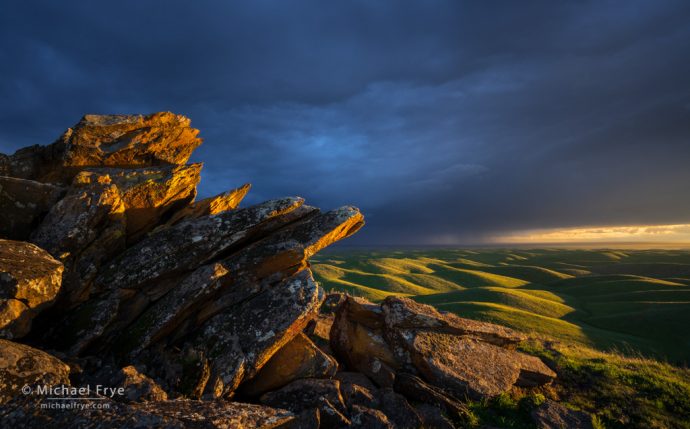
Late-afternoon light in the Sierra Nevada foothills. Most of the photographs I made this afternoon didn’t include a foreground. But I saw this rock outcrop, and kept it in mind for the right opportunity. That opportunity came when the sun slid underneath the clouds and highlighted the jagged forms of the outcrop. 16mm, 1/20th sec. at f/16, ISO 400.
Our winter got off to a wet start in late November and early December, but then fizzled. We hardly got any precipitation during most of December, January, and February – traditionally the wettest months of the year in California, when we get the bulk of our annual rainfall.
That pattern changed a bit in March, with a few good storms to help replenish the previously-anemic Sierra snowpack. And one of our largest storms since last spring is moving into California right now, with forecasters predicting three to four feet of snow above 7,000 feet. Our precipitation for the water year (October 1st through September 30th) will still be below average, but these early-spring storms should, at least, leave us with a decent snowpack for this time of year, with closer-to-normal runoff in our rivers and creeks over the next couple of months, and a more typical summer in the high country.
(more…)
by Michael Frye | Mar 29, 2020 | Vision and Creativity
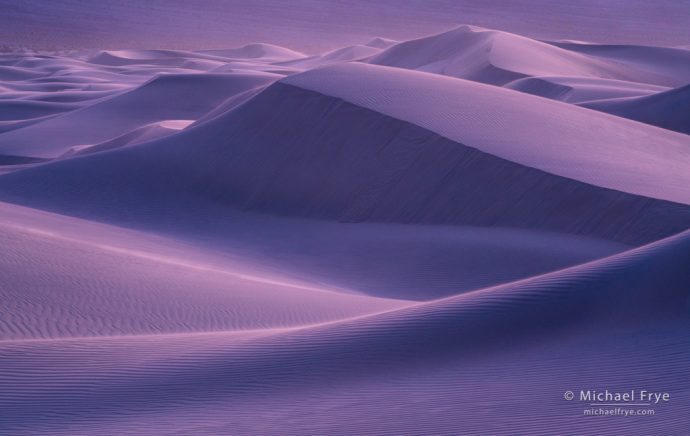
Sand dunes at dusk, Death Valley
Sand dunes present an incredible array of shapes, forms, and textures, which makes them highly photogenic. When I first started photographing dunes I was fascinated by those abstract patterns, especially with low-angle light raking across them. And I still am.
But on our last visits to Death Valley, at the end of February and beginning of March, I realized that my tastes have evolved, and I actually prefer photographing the dunes in soft light, before the sun reaches them in the morning, or after the sun leaves them in the evening. At dawn and dusk the dunes can reflect beautiful colors from the sky, turning gold, blue, pink, or even purple. But also, and perhaps more importantly, they look softer. Under that light the dunes look like big, fluffy pillows of sand. They’re less harsh, and more inviting.
(more…)
by Michael Frye | Mar 22, 2020 | Composition, Light and Weather
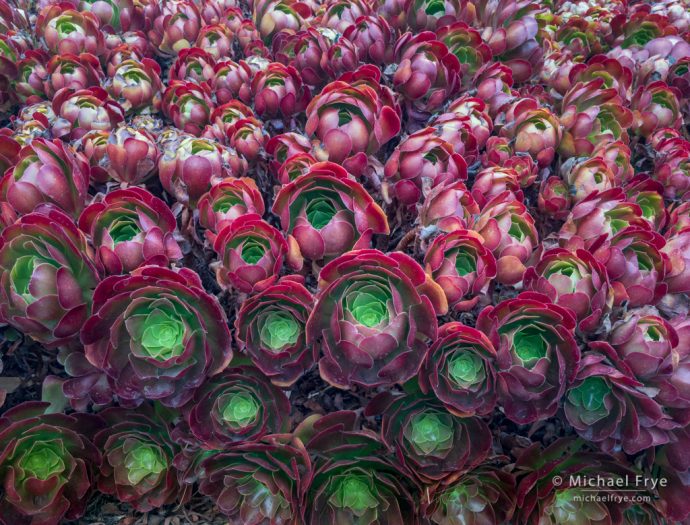
Huntington Gardens – an irresistible pattern! Captured with my iPhone, like all the photos in this post.
I had planned to write this post before the whole coronavirus lockdown. After all, even in “normal” times, many photographers only pick up their cameras when they’re traveling, or taking a workshop. Then when they go on that special trip they’re rusty, and it takes several days just to get back in the groove and start seeing better.
But it doesn’t have to be that way. Here are two simple tips for keeping your photography eye sharp while you’re stuck at home – and even once you go back to your normal routine.
(more…)












